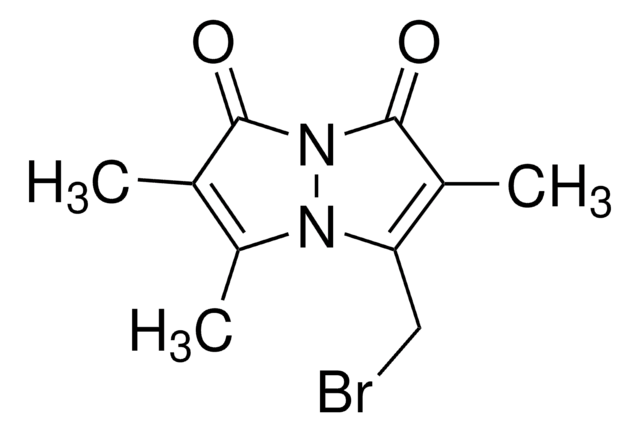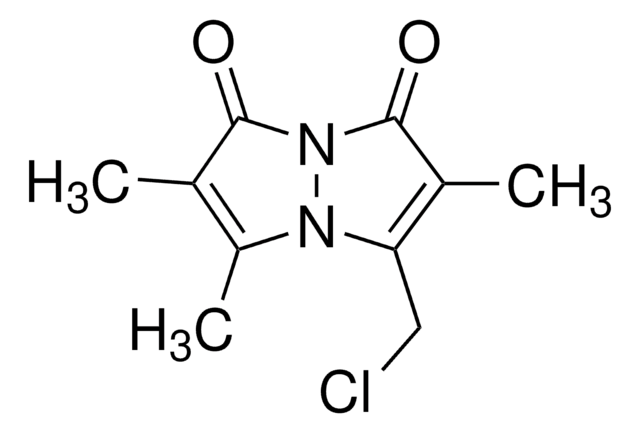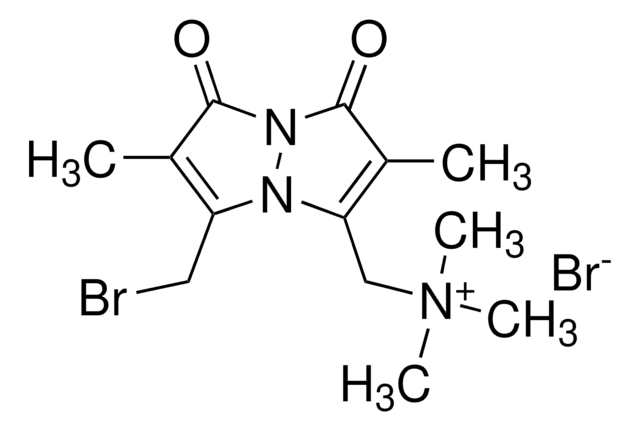B4380
Bromobimane
≥97% purity, powder
Sinónimos:
Monobromobimane
About This Item
Productos recomendados
Nombre del producto
Bromobimane, ≥97% (HPLC)
Nivel de calidad
Ensayo
≥97% (HPLC)
Formulario
powder
color
yellow
mp
161 °C
solubilidad
acetonitrile: 20 mg/mL
ε (coeficiente de extinción)
4.6-5.1 at 396-398 nm in H2O
aplicaciones
diagnostic assay manufacturing
hematology
histology
temp. de almacenamiento
−20°C
cadena SMILES
CC1=C(C)C(=O)N2N1C(CBr)=C(C)C2=O
InChI
1S/C10H11BrN2O2/c1-5-7(3)12-8(4-11)6(2)10(15)13(12)9(5)14/h4H2,1-3H3
Clave InChI
AHEWZZJEDQVLOP-UHFFFAOYSA-N
¿Está buscando productos similares? Visita Guía de comparación de productos
Descripción general
Aplicación
Bromobimane has been used for the quantitative measurement of free hydrogen sulfide in vivo and in vitro. It has been used for the labeling of proteins containing thiol groups.
Acciones bioquímicas o fisiológicas
Código de clase de almacenamiento
11 - Combustible Solids
Clase de riesgo para el agua (WGK)
WGK 3
Punto de inflamabilidad (°F)
Not applicable
Punto de inflamabilidad (°C)
Not applicable
Equipo de protección personal
Eyeshields, Gloves, type N95 (US)
Elija entre una de las versiones más recientes:
¿Ya tiene este producto?
Encuentre la documentación para los productos que ha comprado recientemente en la Biblioteca de documentos.
Los clientes también vieron
Nuestro equipo de científicos tiene experiencia en todas las áreas de investigación: Ciencias de la vida, Ciencia de los materiales, Síntesis química, Cromatografía, Analítica y muchas otras.
Póngase en contacto con el Servicio técnico









